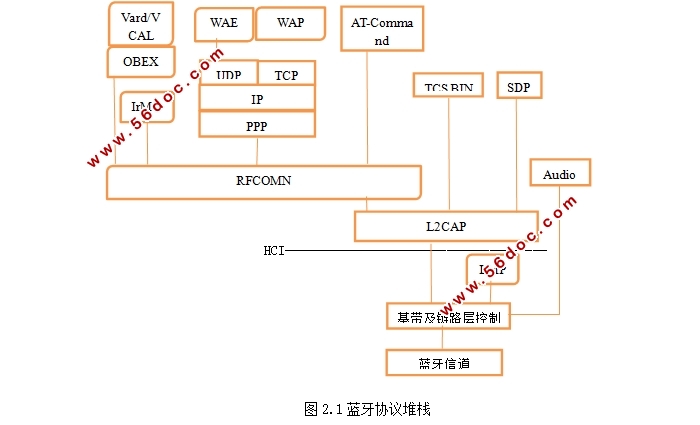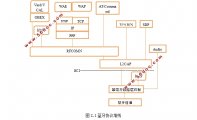蓝牙鼠标设计(任务书,开题报告,论文11000字)
摘 要
目前,蓝牙鼠标的使用率越来越高,蓝牙鼠标相对于普通有线鼠标有着使用距离提高、便于携带、美观舒适等优点。
本论文主要介绍了基于HID协议的蓝牙鼠标的设计过程,其中包括硬件电路设计和软件系统设计。在设计过程中,采用了nrf51822蓝牙单片机为主要硬件设备,通过杜邦线与JLink仿真器连接,使用了5V电源供电。在软件系统设计中,以keil-ARM软件为开发软件,并安装nrf51sdk、J-LINK的驱动包已经协议栈烧写工具nRFgo studio配置好开发环境。在本论文中,先对蓝牙技术作了相关介绍,然后分析了蓝牙协议栈及HID规范,最后分析了软件系统的实现过程。软件系统分为蓝牙初始化和系统初始化、蓝牙数据交互及处理、蓝牙设备的连接等方面,每个模块都有相应的流程图及分析。本次设计成功完成了蓝牙鼠标的功能,实现了蓝牙技术与计算机外设的结合。
关键词: HID;蓝牙;NRF51822
Abstract
At present, the usage rate of bluetooth mouse is getting higher and higher. Compared with ordinary wired mouse, bluetooth mouse has the advantages of increasing the service distance, being easy to carry, being beautiful and comfortable. This paper mainly introduces the design process of bluetooth mouse based on HID protocol, including hardware circuit design and software system design. In the design process, nrf51822 bluetooth MCU was adopted as the main hardware device, and 5V power supply was used to connect the dupont line with the JLink simulator. In the software system design, the keil-arm software is used as the development software, and the driver packages of nrf51sdk and j-link are installed. The development environment of nRFgo studio has been configured with the protocol stack burning tool. In this paper, the bluetooth technology is introduced, the bluetooth protocol stack and HID specification are analyzed, and the software system implementation process is analyzed. The software system is divided into bluetooth initialization, system initialization, bluetooth data interaction and processing, bluetooth device connection and other aspects. Each module has a corresponding flow chart and analysis. This design successfully completed the function of bluetooth mouse and realized the combination of bluetooth technology and computer peripherals..
Key Words:HID;Bluetooth;NRF51822

目录
第1章 绪论......................................................1
1.1 研究背景及意义...........................................1
1.2 国内外研究现状..............................................2
1.3 研究内容及章节安排...........................................3
第2章 蓝牙HID协议..........................................4
2.1蓝牙协议堆栈...............................................4
2.2蓝牙底层协议...............................................5
2.2.1射频协议.................................................5
2.2.2基带和链路控制协议......................................6
2.2.3连接管理协议(LMP).....................................6
2.3蓝牙HID协议分析..........................................6
2.3.1蓝牙主机控制器接口(HCI)................................7
2.3.2 HCI分组概述.............................................7
2.3.3 HCI指令分组.............................................7
第3章 基于HID蓝牙鼠标硬件设计.......................9
3.1 芯片介绍..................................................9
3.2 鼠标原理..................................................9
3.2.1鼠标位移检测.............................................. .10
3.2.2鼠标按键检测.............................................. .11
第4章 蓝牙鼠标系统软件设计........................... .13
4.1程序流程...................................................13
4.2蓝牙芯片初始化与通信链路的连接......................14
4.3数据传输...................................................15
4.4蓝牙设备连接建立........................................15
4.5蓝牙数据收发..............................................16
4.6 HID描述符..............................................17
4.7系统调试..............................................18
第5章 总结与展望......................................................20
参考文献.........................................................21
致 谢............................................................22
|



